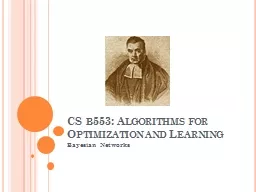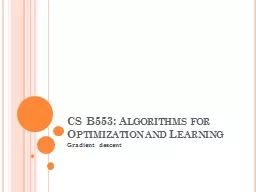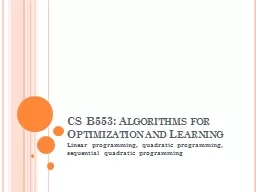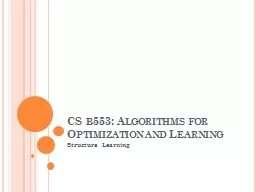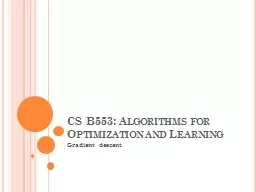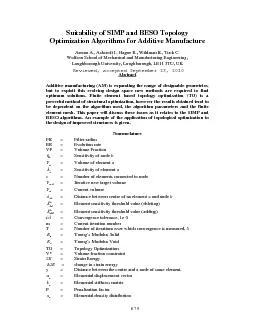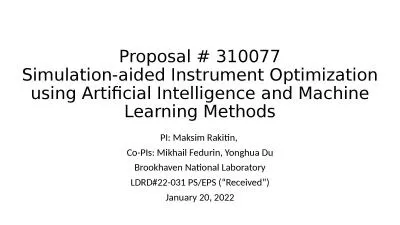PPT-CS b553 : A lgorithms for Optimization and Learning
Author : kittie-lecroy | Published Date : 2019-03-16
Bayesian Networks agenda Probabilistic inference queries Topdown inference Variable elimination Probability Queries Given some probabilistic model over variables
Presentation Embed Code
Download Presentation
Download Presentation The PPT/PDF document "CS b553 : A lgorithms for Optimization..." is the property of its rightful owner. Permission is granted to download and print the materials on this website for personal, non-commercial use only, and to display it on your personal computer provided you do not modify the materials and that you retain all copyright notices contained in the materials. By downloading content from our website, you accept the terms of this agreement.
CS b553 : A lgorithms for Optimization and Learning: Transcript
Download Rules Of Document
"CS b553 : A lgorithms for Optimization and Learning"The content belongs to its owner. You may download and print it for personal use, without modification, and keep all copyright notices. By downloading, you agree to these terms.
Related Documents

